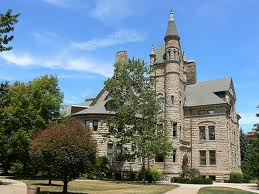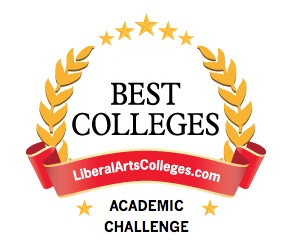
Photo: Oberlin College. Retrieved from: unknown source.
Oberlin College is the first institution in the United States to admit female students and African-American students. Another historic contribution is the connection of Oberlin with the Oberlin Conservatory of Music, the country’s oldest conservatory. Oberlin is also renowned known for producing alumni that earn doctoral and other terminal degrees. Students of Oberlin can cross register in other universities and colleges as Oberlin College is a member of the Great Lakes Colleges Association and the Five Colleges of Ohio consortium.
Nearly three thousand students are in Oberlin, hard at work in pursuing their degrees by choosing from an eclectic array of majors in the college of arts and sciences, and in the conservatory of music . The degrees that a student can earn include Bachelor of Music, a double degree (Bachelor of arts and Bachelor of Music), Masters degrees in Music, Music in Historical Performance and Music Teaching. Many of the world’s most acclaimed conductors and opera performers have honed their craft in Oberlin.
School History
The college and the town were established together in 1833 by Presbyterian ministers. John Jay Shipherd and Philo P. Stewart took the name of Alsatian minister Jean-Frederic Oberlin and named the town and the institution after him. When Charles Finney became president of the college, the institution, then called Oberlin Collegiate Institute, rose to prominence.
The first students of Oberlin college graduated in 1841 and became the first women in America to receive Bachelor of Arts degrees.
Admitting African-American students in an institution was unheard of prior to the civil war, which made Oberlin’s policy to admit African-American students in 1835 a historic decision. In 1844, George B. Vashon, the future founder of Howard University, graduated from Oberlin College. He was also the first black American lawyer admitted to the Bar in New York.
In 1850, the Oberlin Collegiate Institute was renamed Oberlin College by an Act of the Ohio Legislature.
Oberlin is one of the most progressive colleges, and hence made headlines by the turn of the century. In 1970, Oberlin made news for allowing men and women to share the same residence halls.
Campus Life
There is no shortage of student activities at Oberlin, with over 200 active student groups to join. Service programs and organizations that are geared toward community involvement are very popular. Oberlin students are adventurous in their studies and most of the students are involved in civic pursuits and cultural endeavors.
Most of the students live in school, in women only or in co-ed dormitories. The women only halls include Baldwin Cottage for Women, and one safe space residence for women and transgender students. Students are allowed to allow any student of any gender to room with them in dormitories that necessitate sharing of one room or living space. There are also houses that are set up to allow students with language or cultural affinities to stay together.
Many students, however, look forward to the time when they can apply for Village Housing. This kind of arrangement can help a student wean from college life because of the autonomy. Village housing is for seniors or graduating students.
Financial Aid
Oberlin devotes a sizable percentage of its budget to meeting the financial needs of its students. The first step to obtaining aid is to submit all application for aid to the Office of Financial Aid. After a thorough evaluation of the financial need, packages including scholarships, grants, work-study options and loans are offered to the student and his or her family.
The Office of Financial Aid also accommodates questions on financial planning, and offers a confidential financial counseling for the family of the student. Students whose economic status drops because of various reasons like divorce, death, or illness may apply for re-calculation of financial need.
Rankings
2017 College Rankings


